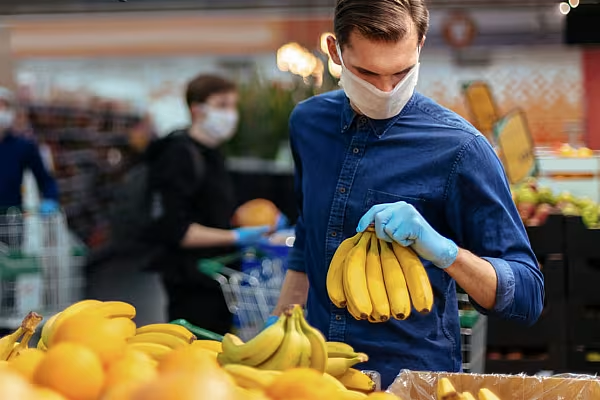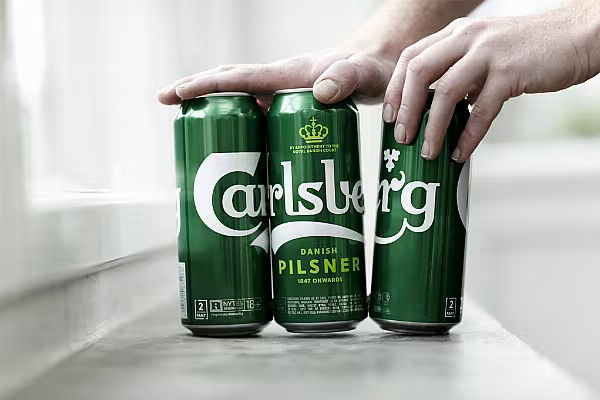Livio Martucci, Solutions Vice President, IRI Italy examines the impact of COVID-19 on the Italian retail and consumer landscape, as well as revealing the results of IRI research from across 31 countries into what the industry expects to happen next.
As Europe starts to take its first few tentative steps out of lockdown, no one really knows how long it is going to take before the simple freedoms we were all once used to will fully return.
What is already clear, however, is that COVID-19 has changed everything. What new behaviour sticks and what reverts back to normal is the question that the FMCG industry is trying to work out.
The Italian Context
As Italy went into lockdown on 9th March, some weeks ahead of many other countries, our data is already giving us valuable insights into shopper behaviour during the crisis, which are very useful for countries trying to predict what is next for them.
FMCG growth in Italy before COVID-19, was around 1.7%. Supermarkets represented the biggest share of wallet, accounting for more than half of all consumer spending, and with just 10% spent in the 30,000 or so smaller stores.
Compared to France and the UK, online was very small in Italy, representing just 1% market share. Consumers spent on average €40 in supermarkets and around €10 in convenience stores per week.
But this changed very quickly from 21 February, the day of the first recorded death in Italy, and again on 24 February, when seven deaths were recorded. Sales increased from this point and over the next four weeks as restrictions were put in place and panic began to set in.
After this, though, in a pattern that’s been replicated in other countries, sales dropped as people had stockpiled what they needed and were only topping up as things were used.
Shop Less, Spend More
While people are in lockdown, we have seen that they shop less often but spend more as the value of a trip has increased from €45 to €76, a rise of 69%.
What they put in their basket has also changed, with a growth of 20% to 40% for essentials like eggs, milk and pasta. Baking is also popular with items like yeast and flour being bought more. Given the focus on hygiene, it is no surprise that disinfectants and wipes are the two fastest growing categories.
As shoppers try to avoid crowds, they are shopping closer to home, so smaller supermarkets and local stores are winning share from the out of town hypermarkets. This has led to a 41% increase in convenience store visits, while discount stores are also seeing a boost, perhaps because of financial concerns in these difficult times.
There are also more people shopping online and using click & collect to avoid queuing at supermarkets. In Italy, higher growth figures for click & collect over delivery, which had a very limited capacity before, suggest that retailers are finding it easier to scale up this side of their business.
What's Next For FMCG?
In early April, IRI conducted research among managers based at manufacturers and retailers across 31 countries to understand how they thought FMCG might change in the 'new normal' after COVID-19. There was a near consensus that there will be a recession, with the majority believing it would impact 2020 and into 2021.
When looking at the trends most likely impact their businesses in the future there were three key areas that stood out.
Shift To Online
Online shopping has clearly exploded during the crisis, and this isn’t really surprising considering that people were told to stay home, meaning those in the most at-risk groups had a strong motivation to buy their groceries online.
When considering the future, online shopping and home delivery was the highest ranked in our survey as a trend that would affect business. Of those asked, 35% felt that this was the single issue that would have the most change on their business.
In Italy, online delivery usually accounts for just 1% of the market but at its peak on 8 April this had risen by 221% year-on-year. This has been a consistent trend across most countries: for example France was up 94% compared to last year and Spain 84%.
IRI believes that e-commerce will continue to dramatically grow in the next 12 months and that this channel will account for 2% to 4% of total FMCG expenditure in 2021.
In the UK, online was around 7% of the market pre COVID-19 but some suggest this may increase to 15%. Before the crisis delivery slots totalled 2.1 million across UK grocery, but they are now to be increased to 2.9 million in order to try to meet the demand.
Although it isn’t clear how many people who have adopted online shopping for the first time during the crisis will keep it, it seems very likely that at least some will.
In-Home Dining
A significant number of eating occasions are out of the home, which is currently just not possible with restaurants closed and only a few delivering. This has forced a change in behaviour as people look for other options.
Whether this means a growth in ready meals, home cooking kits or the ingredients to cook from scratch will differ by country. Of those surveyed, nearly a third (30%) felt that less eating out would have a significant impact on their business in the future.
Health And Hygiene
Health and hygiene have clearly become a much higher focus for everyone during the pandemic. Recently released figures from IRI show that across the biggest categories for the 52 weeks ending 12 April, sales of household cleaners are up by at least 40% compared to the year before across the UK, Italy, France and Germany.
Of those taking part in our survey, 22.8% believed that this was the most likely trend of the new normal life for people, although those who believed it would impact FMCG business was smaller at 14.6%, which is surprising.
Higher hygiene demand is an opportunity for retailers to increase the home and personal hygiene and disinfection assortment (hand soaps and disinfectant, surface and floor disinfectant cleaner, gloves, etc) in-store and also to develop a pharmacy corner in large supermarkets.
The focus on health will likely be ongoing and may also result in renewed demands around the quality and provenance of food, as well as also packaged fresh food rather than loose product.
Planning Ahead
Hopefully this new research will be helpful for those in the FMCG industry trying to plan for the future.
Where people shop has changed significantly during the last couple of months as people are visiting new stores and trying different shopping channels. They have also probably tried new brands, or purchased private label in some categories for the first time.
In addition, the removal of all out-of-home eating opportunities forced people into the kitchen, whether that’s to reheat something ready-made or to cook from scratch.
Shopper behaviour has changed during the pandemic and many of those changes will stick long beyond lockdown. Now more than ever it will be important to understand these consumer behaviours and shopping patterns in order to adapt to the new normal.
For more information, visit www.iriworldwide.com
© 2020 European Supermarket Magazine – your source for the latest retail news. Article by Livio Martucci, IRI Italy. Click subscribe to sign up to ESM: European Supermarket Magazine.














